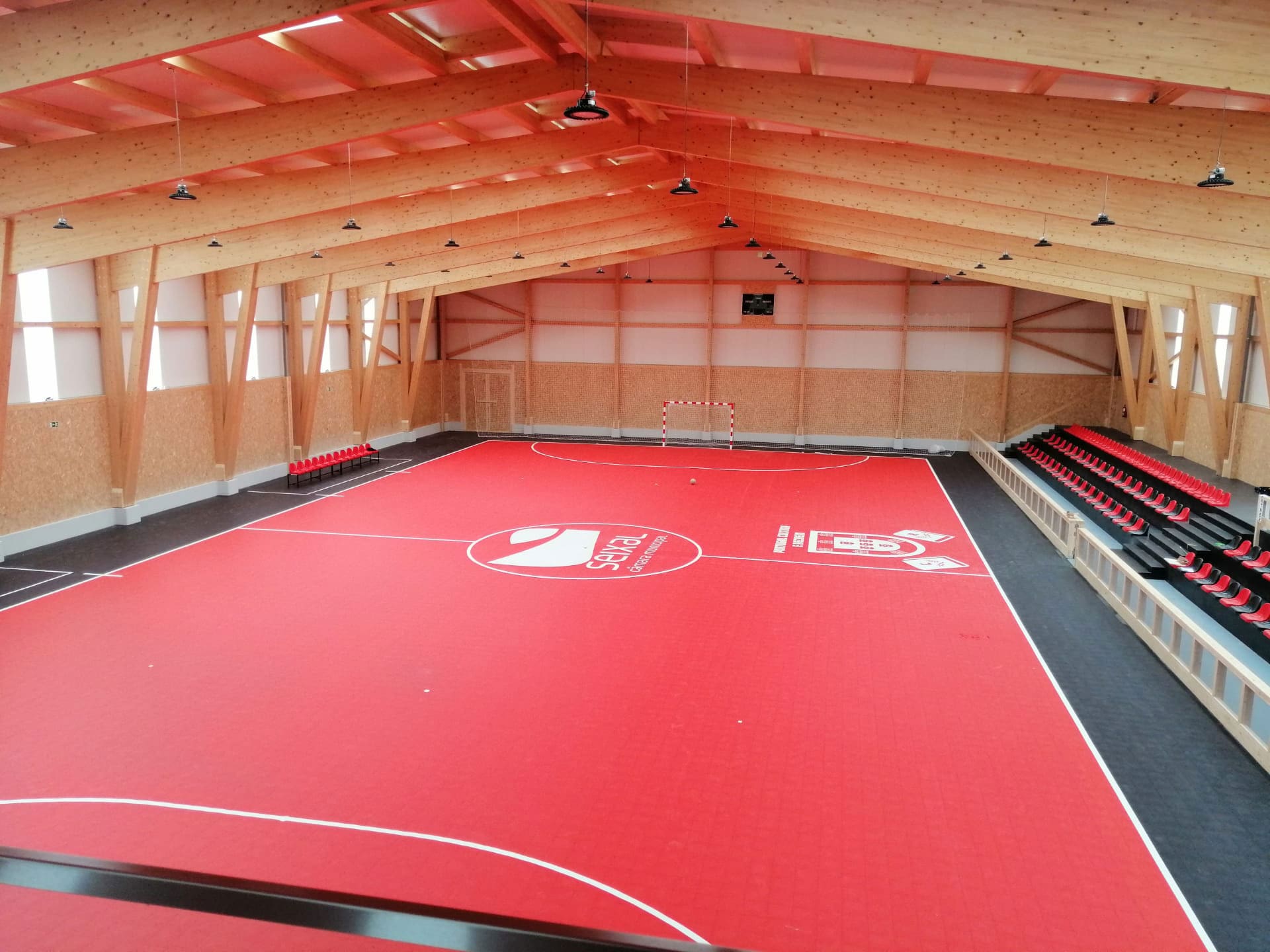
Sports flooring and its importance
The sports floors are the equipment that is common to all sports. Regardless of whether they use goals, posts, baskets or nets, But all sports use sports flooring. As a result, it is one of the pieces of equipment that suffers the most wear and tear over time. And that weighs more on the budget of a sports facility.
See our indoor floors here
Two European Standards relating to sports flooring are in force.
These standards take the characteristics necessary for a floor to be considered a sports floor and define, depending on whether the floor is for indoor or outdoor use, the minimum and maximum values that these characteristics must present for a floor to be approved by the respective standard. : • EN 14904:2006 – Indoor Sports Flooring • EN 14877:2013 – Outdoor Sports Flooring
Outdoor sports flooring
There are several options, some of which are still widely used, which cannot truly be considered sports flooring. These are floorings that were quite common a few years ago, but are now obsolete. These are solutions that do not guarantee the minimum values of safety requirements or performance requirements required of a sports floor. Among this type of flooring we can find Tar floors and Cement and Porous Concrete floors, which do not comply with many of the requirements of the EN 14877:2013 standard, particularly the safety requirements. In outdoor sports flooring, we can identify some of the main solutions:
Synthetic grass flooring
These are floorings that mimic natural grass and, therefore, are specific for the practice of football, not suitable for other sports that greatly reduce the versatility of a sports space, by restricting the modalities that can be practiced there.
Modular polypropylene flooring
These are the most versatile outdoor floors that guarantee the best performance and durability. They are easy to install floorings, without any type of specific maintenance and with extraordinary versatility, capable of adapting to all sports, guaranteeing excellent drainage.
Cement and porous concrete floors
Among these floors we can find in-situ wooden floors without any type of air gap, typical wooden parquet floors or wooden floors laid directly on concrete. We can identify the following types of indoor flooring:
In-situ vinyl sports flooring
These are floors made up of layers of vinyl materials of different thicknesses and densities, which are supplied in rolls. There is a wide variety of vinyl flooring, ranging from 2.5 mm thick to flooring over 10 mm. All of them are glued to the base floor using specific glues and the rolls are welded together using specific welding. This need to use glues and welding makes installation quite detailed and any need for repair quite expensive and difficult. These floors are very susceptible to humidity and heat. Above all, and given that they have a relatively spongy surface, they are not suitable for some sports, such as basketball or sports on roller skates.
Modular polypropylene flooring
This is the most versatile solution in terms of indoor sports flooring. These are floors that allow for a huge variety of sports, with easy installation, great longevity and no maintenance costs.
Sports flooring
In conclusion, when talking about sports flooring, it is very important to carefully consider the needs and available options. There are a myriad of different solutions and within each of these solutions there are many variants and many options. A good choice of sports flooring is a guarantee of satisfaction for all stakeholders involved, from athletes to project financiers.

